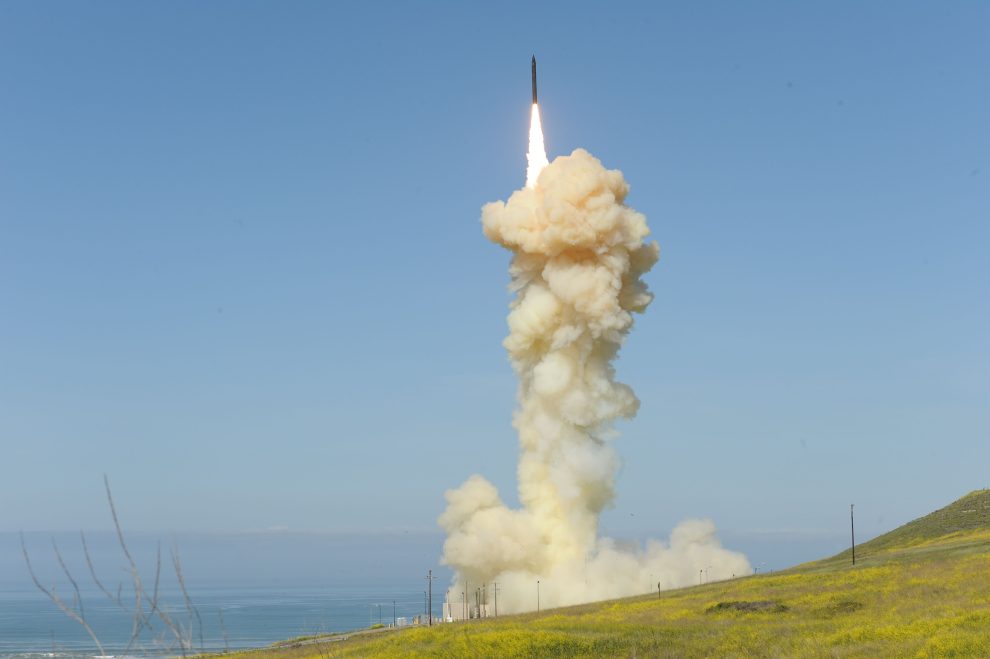WASHINGTON — China now has more Intercontinental Ballistic Missile launchers than the U.S. according to a congressional notification from U.S. Strategic Command, or STRATCOM, which oversees the nuclear arsenal.
The notification highlights China’s rapid advancements in its nuclear modernization program in recent years and has prompted congressional Republicans to call for “higher numbers and new capabilities” in the U.S. nuclear arsenal.
“It is not an understatement to say that the Chinese nuclear modernization program is advancing faster than most believed possible,” Republican leaders on the congressional Armed Services Committee and strategic forces panels said in a joint statement. “We have no time to waste in adjusting our nuclear force posture to deter both Russia and China.”
House Armed Services Chairman Mike Rogers, R-Ala., who issued the statement alongside Sens. Roger Wicker, R-Miss., Deb Fischer, R-Neb., and Doug Lamborn, R-Colo., previously singled out U.S. nuclear modernization to deter China, Russia and North Korea as one of his priorities for this year.
Rep. Adam Smith of Washington, the top Democrat on the Armed Services Committee, cautioned that ICBM launchers are only one metric in measuring nuclear expansion.
“We need to understand the issue in a little bit more detail before we figure out how to respond to it,” Smith told Defense News. “Launchers are one thing. The nuclear enterprise involves a lot more than just launchers. So, I think we need a more total vision.”
STRATCOM is required to notify Congress if China surpasses the U.S. in certain elements of its nuclear program, including the number of ICBM launchers. It provided Congress with a classified notification in November, prompting pushback from Republicans who noted that the law requires an unclassified notification as well.
The unclassified STRATCOM notice did not disclose how many launchers China possesses while noting it provided Congress with additional classified updates.
The U.S. has 450 ICBM launchers. The Pentagon’s 2022 China military power report noted that Beijing had approximately 300 ICBMs with the caveat that it “appears to be doubling the numbers of launchers in some ICBM units.”
The report also found that China’s warhead stockpile has surpassed 400 and projected that “it will likely field a stockpile of about 1,500 warheads by its 2035 timeline” if it continues its current rate of nuclear expansion. The U.S. stockpile contained 3,750 nuclear warheads as of 2021, including 1,515 deployed warheads on ICBM launchers, submarine-launched ballistic missile launchers and heavy bombers.
Making weapons quickly, cheaply
Henry Sokolski, the executive director of the Nonproliferation Policy Education Center, advised against going “tit-for-tat, ICBM-for-ICBM with China.”
“If the aim is to compete with China, you want to do so in a leveraged way where you can prevail,” Sokolski told Defense News. “Beijing can now make far more nuclear weapons systems far more quickly, and far more cheaply, than we can.”
“This means we’re going to have to compete harder where we still have comparative advantages – such as in space – to potentially deprive China of its ability to command and control the ever larger military forces they are assembling,” he said, noting that the U.S. “should be focused on making our existing nuclear forces far less vulnerable to a potential first strike.”
Republicans are pushing for adding to the U.S. nuclear arsenal on top of the nuclear modernization efforts that are already ongoing.
Patty-Jane Geller, a senior policy analyst for nuclear deterrence at the conservative Heritage Foundation, in a statement also said “the U.S. should prepare for an even greater expansion in the years to come” and noted that the STRATCOM notice signals “China’s intent to race to nuclear parity with the U.S. if not superiority.”
And House China Committee Chairman Mike Gallagher, R-Wis., said the Trump administration’s withdrawal from the Intermediate-Range Nuclear Forces Treaty with Russia, or INF, could pave the way for the U.S. to field long-range, ground-launched missile systems in Australia – pending U.S. export control reforms.
“We have a massive opportunity to field INF non-compliant systems that we’re not taking advantage of,” Gallagher said on Tuesday at an Armed Services Committee hearing on China.
Source: Defense News































